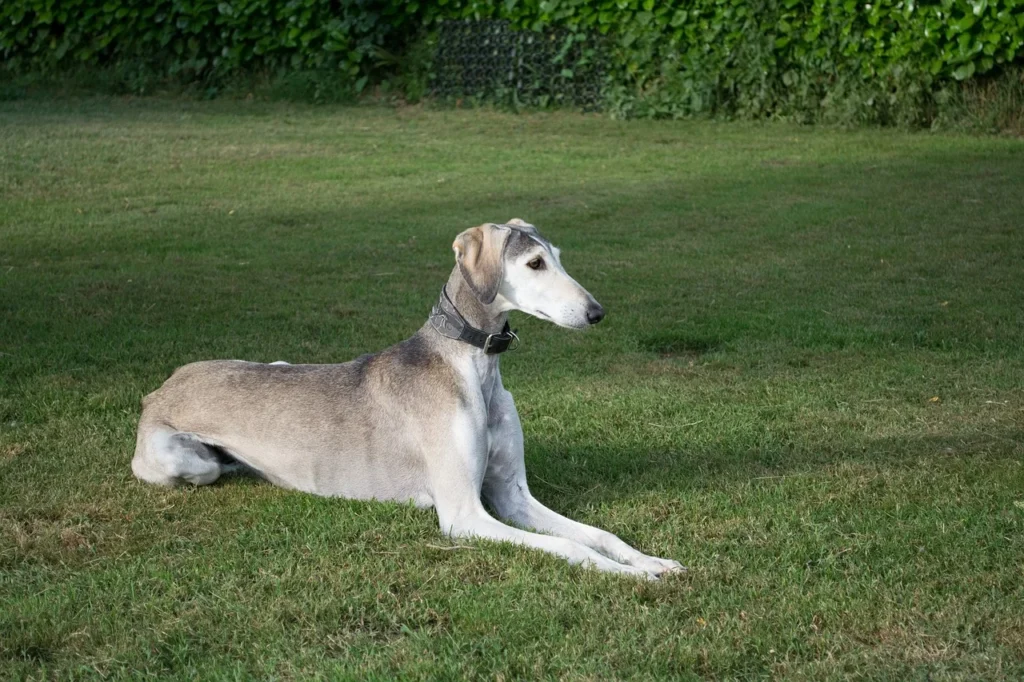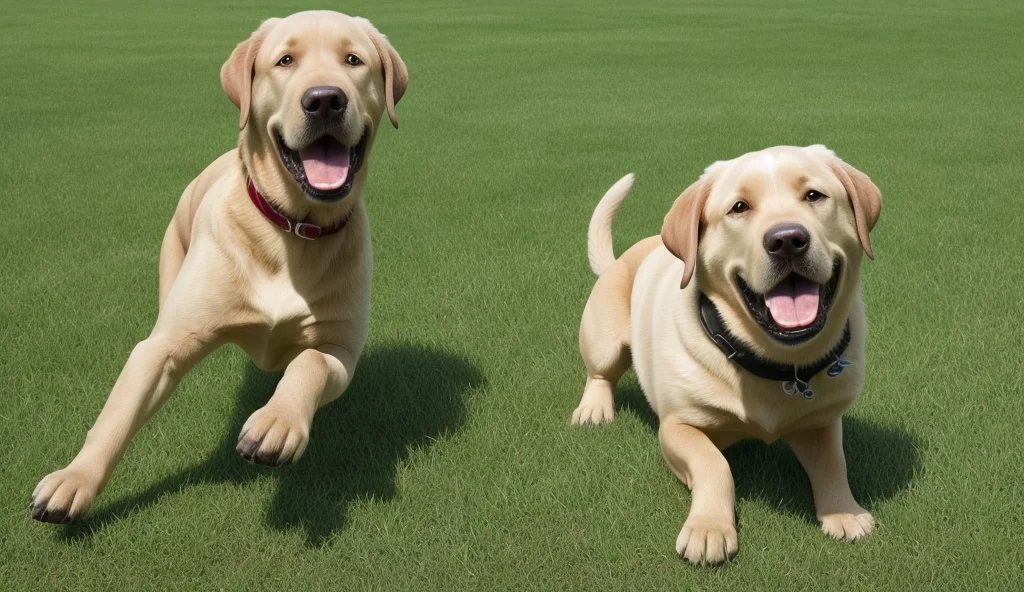Therapy dogs provide emotional support and comfort to individuals in various settings. Dogs in hospitals, nursing homes, or schools make people happy. They uplift spirits and bring joy. This article discusses what makes a great therapy dog and lists the top 10 popular dog breeds for therapy work.
What are Therapy Dogs
A therapy dog is different from other dogs. It doesn’t help with disabilities like service dogs or live with people for mental health like emotional support animals.
Service Dogs:
Service dogs are trained to help people with disabilities. Some guide the blind, and others give therapy for mental disabilities. Service dogs can go to businesses and airplanes and have special privileges.
Emotional Support Animals (ESAs):
ESAs help people with mental health. Dogs can be ESAs. They don’t need special training. The law lets them live with their owners without extra fees, but they don’t have the same privileges as service dogs.
Therapy Dogs:
Despite the term “therapy,” therapy dogs don’t perform specialized therapeutic skills. Instead, they bring comfort to individuals facing loneliness or challenging situations. Therapy dogs make hospital kids happy and bring joy to older people in nursing homes. Also, when therapists use dogs in sessions, it helps a lot. These dogs have a good impact in many therapy places.
Therapy dogs are different. People who want to help others with therapy dogs visit different places, not live with the dog every day.
Qualities of the Best Therapy Dog Breed:
A good therapy dog should have unique qualities. Some breeds are suggested, but any dog, no matter the kind, can be a therapy dog. Personality and behavior are more crucial than breed. The following traits make a good therapy dog, along with considerations for the right fit:
Temperament:
Therapy dogs should be friendly, calm, and patient. They should like talking to people but not be too wild, mainly because the people they visit might be fragile.
Size:
Consider the breed’s size, matching it to your living situation and purpose. Small dogs are suitable for laps and beds, ideal for hospital patients. Larger dogs may be better with children, as they are less likely to be bothered by enthusiastic interactions.
Energy Level:
Assess the dog’s energy level and match it to your ability to provide adequate exercise and mental stimulation. High-energy breeds can be great therapy dogs if given proper care and attention.
Care and Grooming:
Different breeds require varying levels of care and grooming. Consider the coat type and potential health issues associated with specific breeds. Understand the financial commitment, as some breeds are more prone to medical conditions.
To finish, even though some breeds are suitable and popular dog breeds for therapy, what matters more is how a dog acts and how well you take care of it. Checking size, energy, and grooming helps pick the right and popular dog breeds for therapy and your life.
Top 10 Popular Dog Breeds for Therapy
1. Yorkshire Terrier: Most Popular Dog Breeds for Therapy

- Temperament:
Yorkies, or Yorkshire Terriers are friendly and loyal. They are small and make great friends with their owners. Even though they are tiny, Yorkies are confident and make great therapy dogs. They can comfort and support people well. Their intense loyalty creates a warm and helpful connection for those who need it.
- Size:
Yorkies are tiny, and that’s what makes them excellent therapy dogs. Their tiny size helps them go through small spaces quickly. They can comfort people in hospitals, nursing homes, and cozy places where bigger dogs might struggle. Yorkies may be tiny, but they bring a lot of warmth and friendship wherever they go.
- Training Tips:
To train Yorkies, be consistent and positive. They are bright and learn quickly. They understand commands and love positive encouragement. Training helps them behave well in therapy settings and connect better with people. For active Yorkies, be patient, do things the same way, and give praise. This makes them good friends and reliable therapy companions.
In summary, Yorkies are unique. They’re not just tiny and friendly; they can be fantastic therapy dogs. Train and take care of Yorkies, and they become essential friends. They give lots of emotional support in different places. Even though they’re small breed, they can help people who need it, especially in small and cozy spaces.
2. Lurchers: Popular Therapy Dogs

The Lurchers are unique dogs with a special mix of breeds that make them great for many jobs, especially helping people in therapy.
- Adaptability
Lurchers can easily fit into new places. This makes them perfect for therapy work. Whether it’s a busy hospital, a quiet nursing home, or a lively school, Lurchers can act the right way, making people feel good.
They can also handle surprises. If something unexpected happens, Lurchers stay calm. This helps in therapy when people are feeling stressed or worried. Lurchers can still help, no matter what’s going on.
- Caring for Lurchers
To keep therapy Lurchers happy and healthy, you must care for them. Here are some essential things to do:
1. Regular Exercise:
Lurchers are full of energy. They need to move a lot to stay healthy. Going for walks, playing games, or doing special exercises helps keep them strong. This is super important for therapy dogs because being healthy helps them make people feel better.
2. Balanced Diet:
Lurchers need good food to stay strong. They should have the right mix of proteins, vitamins, and minerals. Talking to a vet helps make a food plan just for your Lurcher. This keeps them strong and happy for their therapy work.
3. Regular Vet Check-ups:
Going to the vet regularly is essential for therapy Lurchers. Vets check their health, give them shots, and stop problems early. Doing this helps Lurchers keep helping people with lots of energy and excitement.
4. Mental Stimulation:
Lurchers don’t just need to move their bodies; they need to move their minds, too. Playing with thinking toys, doing fun activities, and learning new things keep therapy dogs’ minds sharp. This is super important because it helps them understand and help people better.
By doing these things, people caring for Lurchers ensure they are solid and ready to help others feel good. With their unique skills and care, Lurchers are essential friends, making people happy and supported.
3. Staffordshire Bull Terrier: An Amazing Therapy Dog

The Staffordshire Bull Terrier isn’t just a lovely pet; it’s an excellent therapy dog. Let’s explore why these dogs are fantastic at providing comfort and support in various therapeutic settings.
- Sociability:
Staffordshire Bull Terriers are known for being friendly and pleasant. Their loving nature helps create a positive environment for anyone they meet. Staffies are helpful in hospitals and bring joy to the elderly in nursing homes. Their friendly personality helps them make good connections with people.
- Exercise Needs:
Staffordshire Bull Terriers need regular exercise to keep their positive behavior during therapy. This active breed loves activities like walks, playtime, or agility exercises. When a Staffie exercises enough, it stays calm and focused in treatment. This makes them great companions.
- Common Misconceptions:
Staffordshire Bull Terriers often face unfair ideas that hide their true potential as loving therapy dogs. People can better understand the breed’s natural qualities by clearing up these misunderstandings. Learning about their friendly and adaptable nature helps break stereotypes. Staffordshire Bull Terriers are essential members of therapy teams. They care and go beyond their unfair reputations.
In conclusion, Staffordshire Bull Terriers are fantastic therapy dogs. They are friendly, need exercise, and help clear up misunderstandings. These friends bring warmth and comfort and show that love is more important than a dog’s breed.
4. The English Springer Spaniel: Bringing Joy to Therapy

English Springer Spaniel is a bundle of energy, making therapy sessions lively and cheerful. Their excitement is like a virus spreading joy to everyone they meet.
- Energetic Nature:
The English Springer Spaniel is lively and perfect for therapy teams. Their energy brings happiness to rooms, whether playing with kids or adding fun to nursing homes. Springer’s enthusiasm creates a unique and valuable atmosphere in therapy.
- Grooming Requirements:
Keeping the English Springer Spaniel’s long, silky coat in top shape needs regular grooming. This keeps them looking good and makes them extra appealing during therapy sessions. A well-groomed Springer gives a soft and pleasant experience for those around them, making therapy even better.
Brushing regularly and trimming occasionally help prevent the Springer’s coat from getting tangled. Brushing the Springer periodically keeps it looking fantastic. It shows their dedication to being clean and well-cared for.
- Health Considerations:
English Springer Spaniel owners who help others should ensure their dogs stay healthy. Take your dog to the vet often, get shots, and do things to stop problems.
Know about common health issues, like ear problems or hip issues. This helps you fix problems fast. Fixing problems early keeps your dog happy and healthy. Then, they can bring joy and comfort to people.
Springer’s energy looks, and health care make them outstanding in therapy. They stay excited, look good, and stay healthy. This helps them make a good difference in people’s lives, giving them comfort and support.
5. Pomeranian: A Tiny Therapist with a Big Heart

Small Pomeranians make excellent therapy dogs. They are tiny but have big, lively personalities. Their small size helps them bring comfort in places where big dogs can’t go.
- Size and Appearance:
Don’t let small dog breed size of them fool you – Pomeranians are big-hearted therapy companions. With their fluffy coats and lively demeanor, they capture attention and affection easily. Tiny Pomeranians are perfect for giving emotional help, especially in small places. They can cuddle with patients or make classrooms happy. Pomeranians add charm to therapy and bring joy.
- Socializing a Pomeranian:
To be good at therapy, Pomeranians must meet many people and see different places when they’re little. This helps them feel confident and do well in therapy. Pomeranians, who are used to different situations, can bring happiness and comfort.
Early socialization makes Pomeranians friendly. They become great friends for people who need support.
- Potential Challenges:
Every breed comes with its unique challenges, and Pomeranians are no exception. One common challenge is their tendency to bark. Addressing this behavior is crucial to maintaining a calm therapy environment. Pomeranians can be good therapy dogs with training. Training helps them be clear and focused during therapy.
Understanding and solving problems makes Pomeranians great at their therapy jobs. They give comfort and joy to people. Their small size, lively personalities, and good behavior help in therapy.
6. Cavalier King Charles Spaniel: Your Loving Therapy Pal

The Cavalier King Charles Spaniels are therapy dogs. They give exceptional help in their loving and gentle ways. They are great friends, bringing comfort to those who need it.
- Affectionate Nature:
Cavalier King Charles Spaniels love to be friendly. They naturally show affection, making them great for therapy work. Their gentle behavior helps them connect easily with people, bringing comfort and joy. These spaniels make therapy better by snuggling and giving gentle nudges.
- Potential Health Issues:
Cavalier King Charles Spaniels, like all dogs, need special care for therapy. Knowing about their health, like hearts and ears, helps take good care of them. Going to the vet a lot keeps them healthy for therapy help.
- Creating a Comfortable Environment:
A comfy environment is crucial for Cavalier King Charles Spaniels to do well in therapy. Familiar items, like a favorite blanket or toy, make therapy sessions more secure. Cavalier King Charles Spaniels do great in therapy treatment with cozy settings. Soft lights and calming colors make them even better at their job.
They feel happy in comfy places, making therapy friendly for people. Overall, these Spaniels are awesome therapy friends. They’re loving, understand health, and create a warm and caring space. They help people feel better emotionally.
7. Greyhound: The Calm and Gentle Helper

Greyhounds, often known for racing, bring a calm and gentle spirit to help in therapy. They are excellent for situations that need a relaxing and comforting friend.
- Calm Behavior:
Greyhounds surprise us with their calmness, even though they are known for racing. This calmness makes them great for therapy. Being calm and composed in therapy is essential; Greyhounds naturally bring this soothing presence. This helps people feel good and happy.
- Special Looks:
Talking about the unique looks of Greyhounds makes them even more charming as therapy dogs. They have a smooth body and unique coat that makes them easily noticed. Their good looks catch your eye and make therapy sessions visually lovely and comforting.
- Exercise Routine:
Even though Greyhounds are calm, they need regular exercise to stay healthy. Daily walks and some playtime help keep them fit and happy. Doing this helps them stay focused during therapy sessions. This way, they can give the best support and comfort to those they are helping.
We know exercise is vital for Greyhounds to be healthy therapy friends. With their calm ways, unique looks, and regular exercise, Greyhounds bring a special touch to therapy. They help people feel good with their calm and unique appearance.
8. Bichon Frise: The Playful Therapy Companion

They are known for their playful personalities and bring joy to therapy sessions. Their ability to make people happy with their playful actions creates a positive and uplifting atmosphere.
- Playful Personality:
A Bichon Frise’s heart is full of playfulness. Their lively nature makes therapy extra joyful. Bouncing around or doing cute tricks, they magically lift spirits and bring smiles to everyone. This upbeat energy significantly contributes to creating a positive and enjoyable therapeutic environment.
- Grooming Tips:
Keeping Bichon Frises looking fluffy requires regular grooming. Their charm comes from their soft, fluffy coat. Brushing, preventing tangles, and occasional trims keep them looking great for therapy.
- Nutrition Requirements:
Understanding the nutritional needs of Bichon Frises is crucial for their overall health. Giving them the right food makes sure they have therapy energy. A good diet keeps them playful and healthy, ready to bring joy to others.
In summary, Bichon Frise is a great therapy pal. They’re playful, well-groomed, and eat the right food, making therapy positive and uplifting.
9. Labrador Retriever: The Smart Helper

The Labrador Retrievers are known for being innovative, which is helpful for therapy work. They can understand and react to people’s feelings, improving their therapy.
- Intelligence:
Labrador Retrievers are brilliant dogs, and that’s what makes them great for therapy. Their cleverness helps them know how people feel, making therapy sessions more helpful and supportive.
- Exercise and Mental Stimulation:
To stay focused during therapy, Labrador Retrievers need exercise and things to make them think. Activities that challenge their bodies and brains prepare them for every therapy session. Regular exercise helps them stay healthy and think clearly, making them awesome at therapy.
- Common Behavioral Traits:
Knowing how Labrador Retrievers usually act is essential for maximizing their therapy work. They are friendly and love making people happy, which makes them perfect for therapy. Their social behavior makes therapy feel nice and helps people connect with them.
Labrador Retrievers are fantastic at therapy. They’re smart, exercise well, and are friendly. Their intelligent and social nature makes therapy a happy and helpful experience for everyone who needs comfort and support.
10. Shih Tzu: The Perfect Therapy Friend

They are fantastic therapy dog breeds, and here’s why:
- Adaptability:
Shih Tzus is good at fitting into different places for therapy. They can be in a busy hospital or a quiet nursing home and feel right at home. Shih Tzus can adjust to different situations, making therapy happy and easy for the Shih Tzu and the people they help.
- Training Challenges:
Sometimes, Shih Tzus can be a bit stubborn during training. But that’s okay! With regular patient training, Shih Tzus can become an excellent therapy dog. They need to overcome training challenges. This way, they can bring joy and comfort to everyone during therapy.
- Grooming Essentials:
Because Shih Tzus have long coats, they need grooming to look nice. Keeping them clean and tidy is crucial for them to be excellent therapy dogs. When they look nice, it helps them do an even better job of bringing comfort and support during therapy.
In the end, Shih Tzus are the best therapy friends. They can adjust, overcome challenges, and stay well-groomed. Shih Tzus makes therapy positive and comforting for everyone who needs it.
Conclusion: 10 Popular Dog Breeds for Therapy
To find the right therapy dog, consider temperament, size, and breed traits. This article lists the top 10 popular dog breeds for therapy. Each has unique qualities that help give comfort and support.
FAQs about 10 Popular Dog Breeds for Therapy
What is the primary role of a therapy dog?
Therapy dogs help people feel better by giving emotional support and being friends. They do this in different places, making mental well-being better.
How can I train my dog to become a therapy dog?
To train your dog for therapy, make them friendly, teach them basic commands, and let them experience new places. Professional training programs can also be beneficial.
Are there specific breeds better suited for therapy work?
Any dog can be a therapy dog, but some, like Labrador Retrievers and Cavalier King Charles Spaniels, are known for being friendly and pleasant.
Can mixed-breed dogs be practical therapy animals?
Yes, mixed-breed dogs can be practical therapy animals. Their suitability depends on individual temperament and training.
What qualities should I look for in a therapy dog?
Find a dog that is calm, friendly, and good with people. It can stay calm in different places and is easy to train. Adaptability and trainability are essential for a therapy dog.


